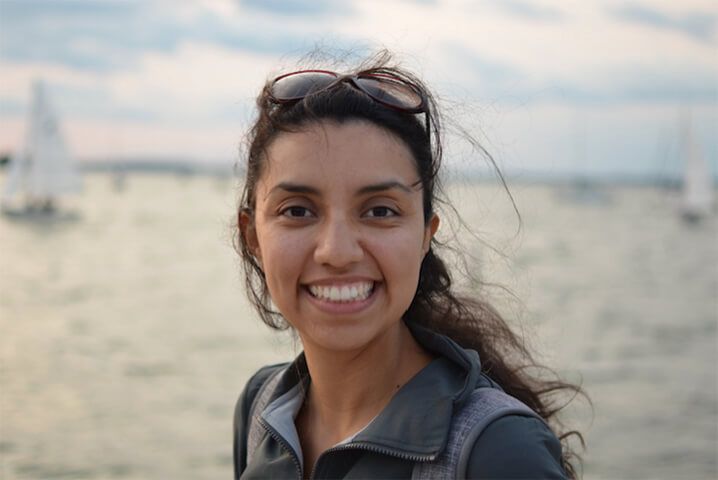Claudia Solís-Lemus MA’13, PhD’15 had not taken a biology class since high school. She was earning her PhD in statistics and always thought she would study abstract math theorems. But one talk by one professor — about the evolutionary tree of life — flipped her career aspirations on their head.
“It seems like evolution is this great scientific mystery that scientists all around the world are trying to tackle,” she says. “And just the idea that probability gives you a tool to use — it kinda made me feel like I was doing something useful for science.”
Today, Solís-Lemus is an assistant professor in UW–Madison’s Department of Plant Pathology — the only statistician in that department. She uses her mathematical mindset to help biologists test their hypotheses and use their data in a statistically sound way.
Her two most recent research projects involve predicting the health of plants by studying the soil’s microbial genome. And her main research project, which sprang from that one talk, looked at how to use mathematical models to determine the evolutionary relationship between species. She has developed computer software that is used all around the nation by scientists to test how different species (potato, fish, bacteria) fit on the tree of life.
Solís-Lemus didn’t always realize it, but she says everything is rooted in mathematics.
“I think statistics is everywhere; it doesn't matter where you look, like, it's there — hidden in finance, biology, psychology, economics — everything that we do in science has some component of statistical analysis,” she says.
She moved to Madison in 2010 to complete her PhD at the UW. Solís-Lemus had never lived outside of Mexico City, but her undergraduate professors told her that the math program in this cold Wisconsin capital was one of the best in the world.
“My professors said that this is one of the few statistics departments that is strong both in theory and applications. There are many statistics departments in other universities that are either very focused on theory but that are not as focused on applications, or very focused on application but not as much theory,” she says.
After accepting her current position in August 2019, her day consists of collaboration with research professors in the plant pathology department. They come to her hoping to use mathematical theory and probability to address their latest questions.
She wrote her dissertation on the evolution side of her research, where she is trying to determine how different species fit on the tree of life. She also created a computer program called PhyloNetworks, which allows scientists to upload genetic data in her program to determine the tree that links the species under study together. She has taught workshops across the country to people who want to use her software.
Her next goal is to create a similar software for the second part of her research — microbial communities in soil, which she hopes someday can help predict plant health.
“There's a combination of microbial communities in soil that come from bacteria, viruses, fungi, that are all interacting,” Solís-Lemus says. “We think that these microbial communities have an effect on the plants that we harvest. So depending on the microbial community, you can have healthy plants, or you can have sick plants, or you're going to have plants that have a good yield, or you could have plants that they have very low yield that year. I'm working on mathematical tools for, ‘How do we describe these microbial communities from a mathematical perspective’ and ‘How are we able to predict, if I get a sample from the soil — I have not even planted any plant but I just take a sample — could I predict it's going to have a good year?’ ”
Solís-Lemus hopes to be a tenured professor in the plant pathology department. Right now she is working with students on different projects such as machine learning, but she wants students to know that statistics classes don’t have to be detached from reality.
“When students take a statistics class, they tend to have examples that involve things like a coin toss or dice roll, and they don't seem applicable to real life. So they take statistics class and they end up thinking, ‘Yeah, this is useless.’ ”
But she wants every student to find the applicable aspect of statistics like she did and to give students hands on experience with scientific data sets.
One day, she might be that influential professor, who flips career aspirations on their head.










